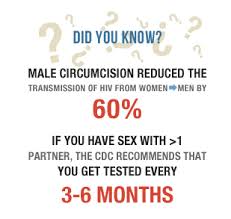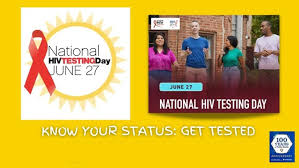Where does HIV/AIDS come from for staters? Here is the history we have learned over the years about this virus:
Well the Aids Institute states “Scientists identified a type of chimpanzee in West Africa as the source of HIV infection in humans. They believe that the chimpanzee version of the immunodeficiency virus (called simian immunodeficiency virus or SIV) most likely was transmitted to humans and mutated into HIV when humans hunted these chimpanzees for meat and came into contact with their infected blood. Over decades, the virus slowly spread across Africa and later into other parts of the world.
The earliest known case of infection with HIV-1 in a human was detected in a blood sample collected in 1959 from a man in Kinshasa, Democratic Republic of the Congo. (How he became infected is not known.) Genetic analysis of this blood sample suggested that HIV-1 may have stemmed from a single virus in the late 1940s or early 1950s.
We know that the virus has existed in the United States since at least the mid- to late 1970s. From 1979–1981 rare types of pneumonia, cancer, and other illnesses were being reported by doctors in Los Angeles and New York among a number of male patients who had sex with other men. These were conditions not usually found in people with healthy immune systems.
In 1982 public health officials began to use the term “acquired immunodeficiency syndrome,” or AIDS, to describe the occurrences of opportunistic infections, Kaposi’s sarcoma (a kind of cancer), and Pneumocystis jirovecii pneumonia in previously healthy people. Formal tracking (surveillance) of AIDS cases began that year in the United States.
What is the actual virus causing AIDS?
In 1983, scientists discovered the virus that causes AIDS. The virus was at first named HTLV-III/LAV (human T-cell lymphotropic virus-type III/lymphadenopathy-associated virus) by an international scientific committee. This name was later changed to HIV (human immunodeficiency virus).
For many years scientists theorized as to the origins of HIV and how it appeared in the human population, most believing that HIV originated in other primates. Then in 1999, an international team of researchers reported that they had discovered the origins of HIV-1, the predominant strain of HIV in the developed world. A subspecies of chimpanzees native to west equatorial Africa had been identified as the original source of the virus. The researchers believe that HIV-1 was introduced into the human population when hunters became exposed to infected blood.”
HIV is a lenti virus which is a subgroup of the retrovirus.
For starters HIV affects the white blood cells (WBCs) in this sense:
We have types of WBC’s and one type is called CD4. That is the cell the HIV binds to when it gets in your blood stream. Another name for them is T-helper cells. CD4 cells are made in the spleen, lymph nodes, and thymus gland, which are part of the lymph or infection-fighting system. CD4 cells move throughout your body, helping to identify and destroy germs such as bacteria and viruses. Without going into specific medical terminology there is replication of this virus in the DNA and RNA killing out the normal white blood cell type of CD4 and other things like macrophages which are reproduced into CD4 cells with the virus with the body not knowing or able to detect this error in DNA and RNA of the CD4 white blood cells which ending line allows the immunity to go down. Remember the HIV virus binds to the surface of the CD4 cells. The virus entering CD4 cells now allows them to become a part of CD4 replicated cells regarding their make up due to changes made in the DNA and RNA cause the virus has invaded the bloodstream. As CD4 cells multiply to fight infection, they also make more copies of HIV now. Continuing to replicate, leading to a gradual decline of CD4 cells in decreasing that individuals immunity to infection.
The 2 types of HIV:
There are two types of HIV that have been characterized: HIV-1 and HIV-2.
HIV-1 is the virus that was initially discovered and termed both LAV and HTLV-III. It is more virulent, more infective and is the cause of the majority of HIV infections globally. The lower infectivity of HIV-2 compared to HIV-1 implies that fewer of those exposed to HIV-2 will be infected per exposure. Because of its relatively poor capacity for transmission, HIV-2 is largely confined to West Africa.
What is CD4 and how it helps the doctor:
The CD4 count measures the number of CD4 cells in a sample of your blood drawn by a needle from a vein in your arm. Along with other tests, the CD4 count helps tell how strong your immune system is. By knowing this when the blood test is done the CD4 helps the following, for the doctor:
-it indicates the stage of your HIV disease
-it guides the treatment
– it predicts how your disease may progress.
**Keeping your CD4 count high can reduce complications of HIV disease and extend your life.**


